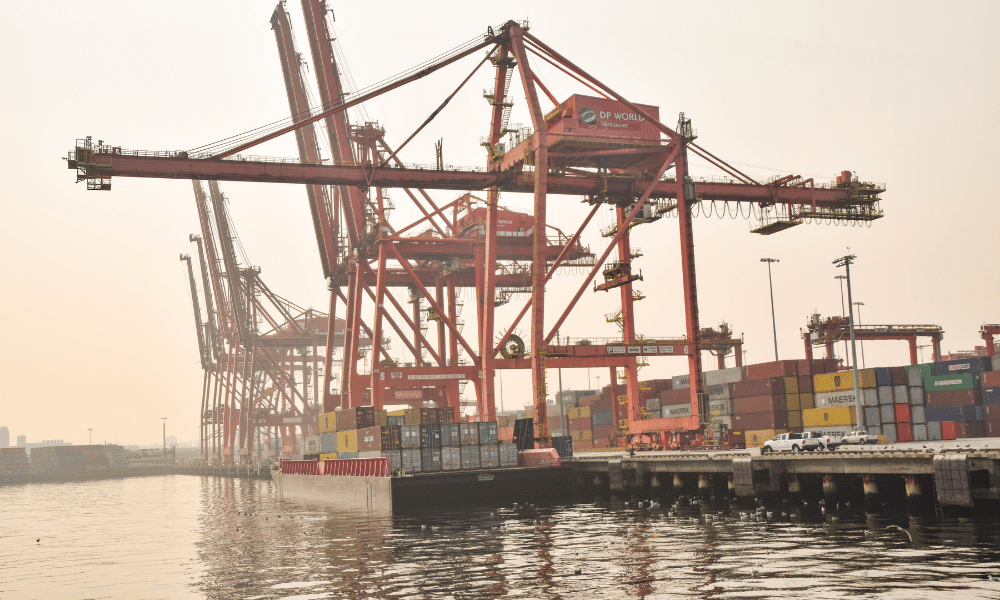
In 2018, the Soy Transportation Coalition (STC) published research highlighting the economic benefits to soybean farmers of deepening the lower Mississippi River from 45 feet to 50 feet. (Joseph L. Murphy/Iowa Soybean Association)
Project to enhance soybean’s leading export region officially kicks off
October 12, 2020
By Mike Steenhoek
On July 31, the U.S. Army Corps of Engineers and the State of Louisiana hosted a signing ceremony in New Orleans to officially kick off an important infrastructure project for Iowa soybean farmers and the broader economy – deepening the lower Mississippi River. Governor John Bel Edwards (D-LA) and Major General Diana Holland (U.S. Army Corps of Engineers – Mississippi Valley Division Commander) presided over the ceremony.
The 256-mile stretch of the Mississippi River from Baton Rouge, Louisiana, to the Gulf of Mexico accounts for 60% of U.S. soybean exports and 59% of corn exports – by far the leading export region for both commodities. Soybean farmers and a large number of Mississippi River stakeholders have been promoting the deepening of the lower river shipping channel.
In 2018, the Soy Transportation Coalition (STC) published research highlighting the economic benefits to soybean farmers of deepening the lower Mississippi River from 45 feet to 50 feet. In 2019, the United Soybean Board (USB) announced a $2 million allocation to offset the planning, design and research costs of the project. The American Soybean Association, STC, Iowa Soybean Association and other state soybean associations actively promoted the project to the Trump Administration and congressional and state leaders. This collaborative effort from national and state soybean farmer organizations proved invaluable in helping the project receive necessary funding and approval.
“The soybean industry made for a great case study and reason to deepen the Mississippi River,” says Edwards. “Once this project is complete, the deepening of the Mississippi River will improve the global imports and exports of goods, and in turn, improve jobs, businesses and the quality of life for thousands of Louisianans and others who depend on the Mississippi River. I am grateful for our partnership and the commitment of time and money from the farming leaders of the USB, STC and countless others who have made this project possible.”
The overall project is estimated to cost $245 million and will occur in three phases. The actual work on the first phase of the project – deepening the river from Venice, Louisiana, to the Gulf of Mexico – is expected to be complete by fall 2021.
STC research concludes that shipping costs for soybeans from Mississippi Gulf export terminals would decline 13 cents per bushel ($5 per metric ton) once the lower Mississippi River is dredged to 50 feet A deeper river will allow both larger ships to be utilized and current ships being used to be loaded with more revenue-producing freight. Average vessel loads will increase from 2.4 million bushels of soybeans (66,000 metric tons) to 2.9 million bushels (78,000 metric tons) – a 21% increase or 500,000 bushels.
“A deeper river will allow both larger ships to be utilized and current ships being used to be loaded with more revenue-producing freight."— Mike Steenhoek
Research also identifies the impact on interior basis – the difference between the local price a farmer receives and the market value established by the Chicago Board of Trade – for soybeans in 31 states if the lower Mississippi River shipping channel is dredged. It is well established that farmers located in closer proximity to the nation’s inland waterways and barge transportation enjoy a positive or less negative basis verses soybeans grown in areas further removed. As a rule, the less costly and more efficient the supply chain is subsequent to farmers delivering their soybeans, the higher value a farmer will receive for the bushels of soybeans produced.
This story was originally published in the October 2020 issue of the Iowa Soybean Review.
Back